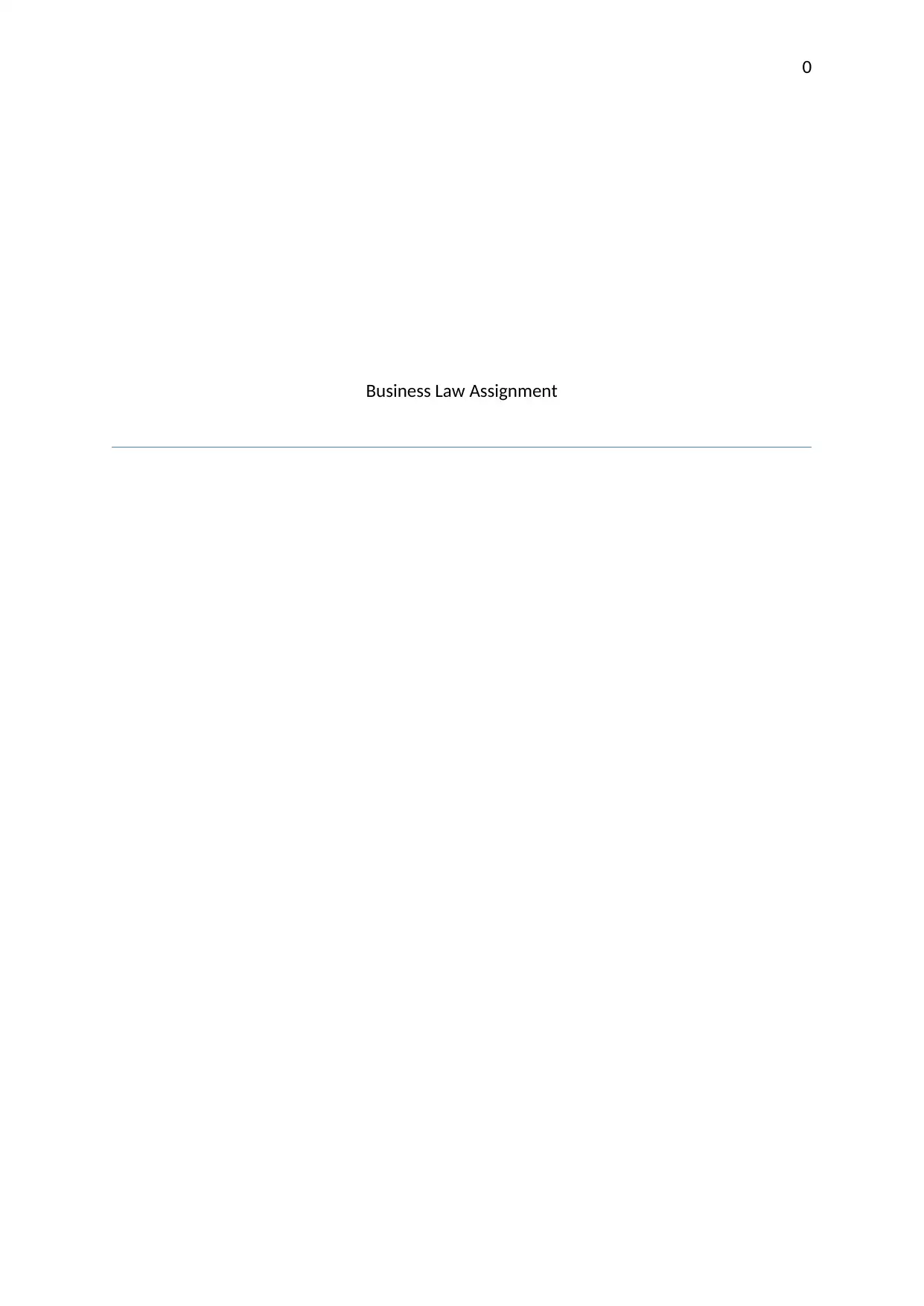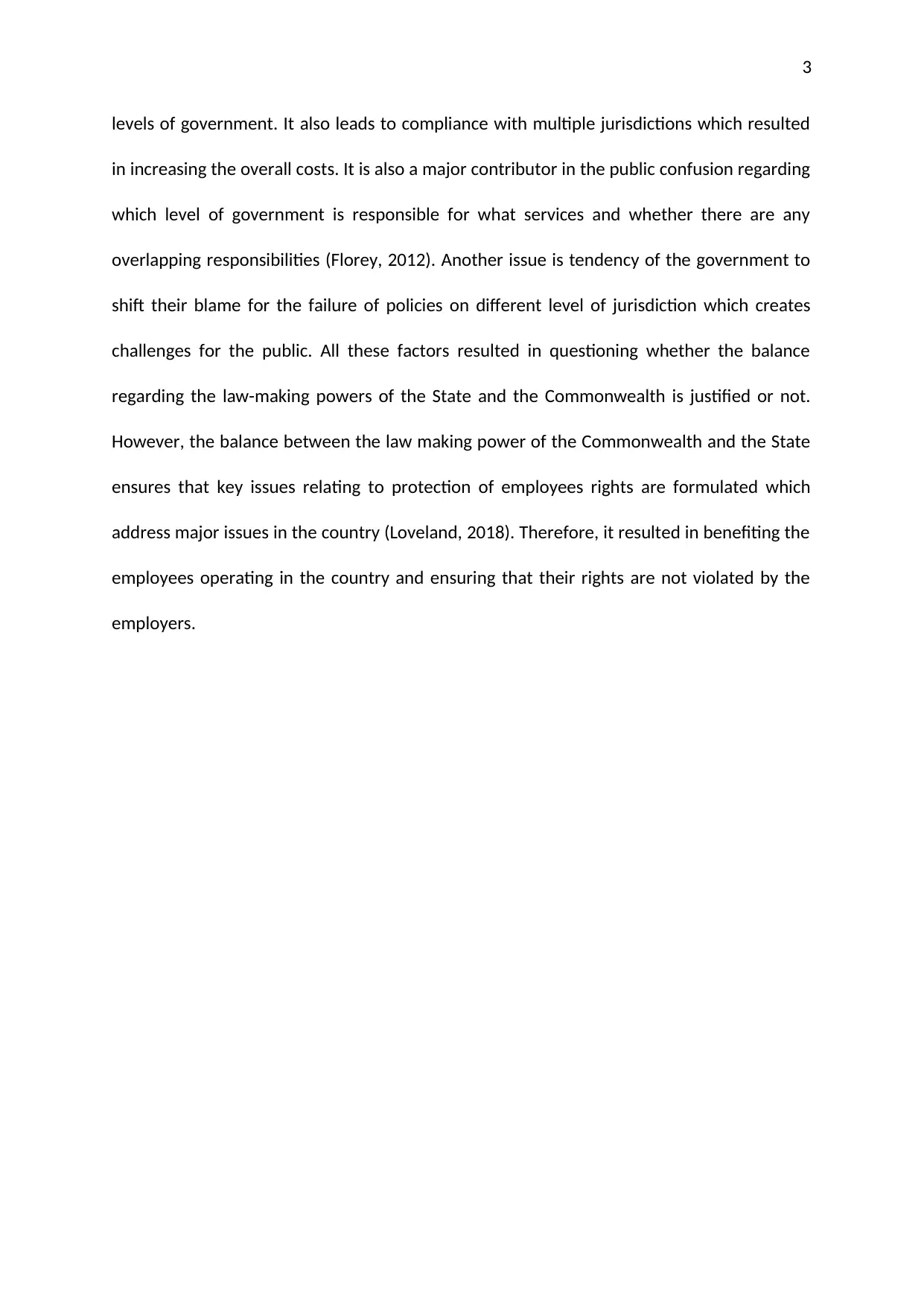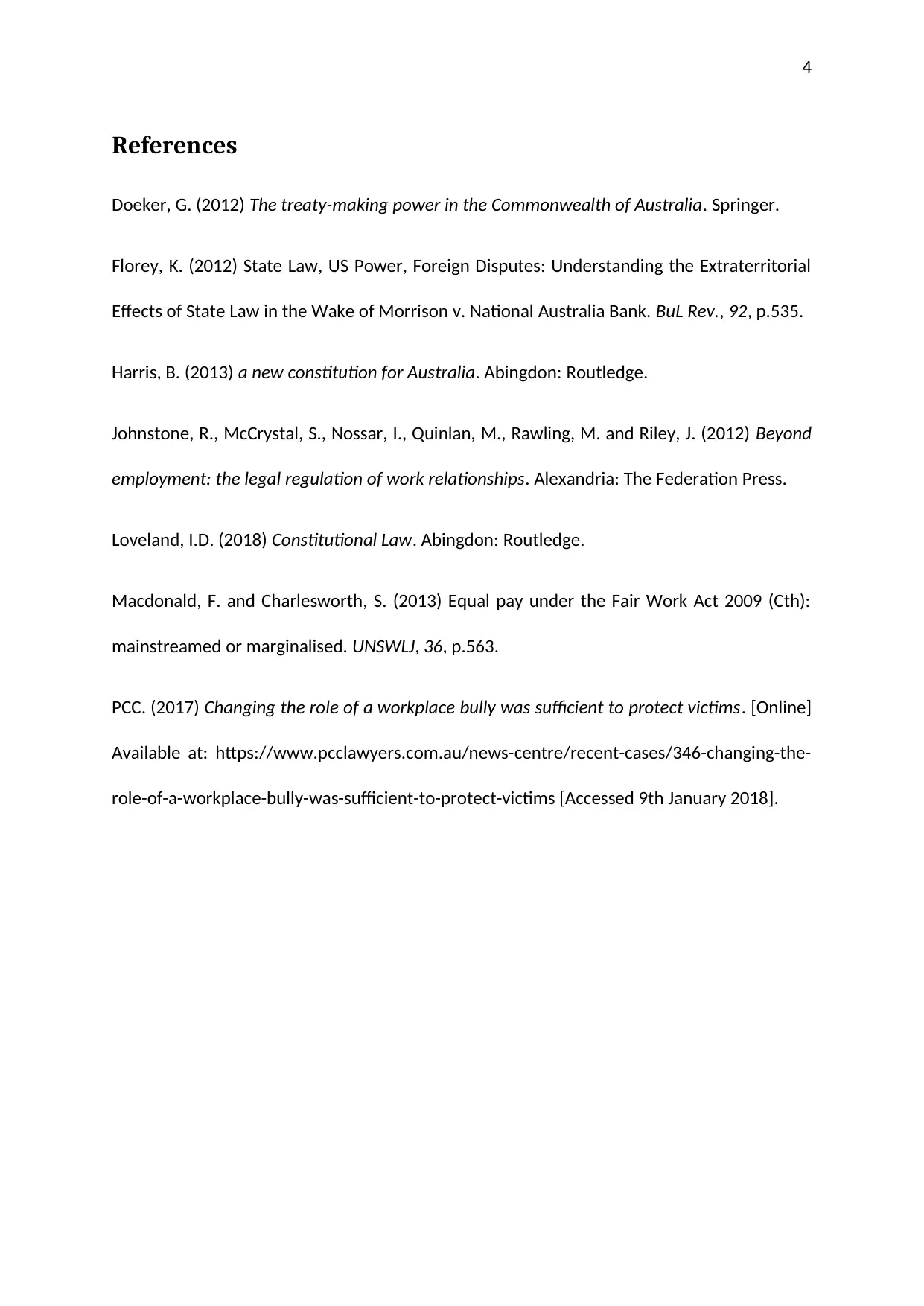Analysis of Law-Making Powers: Commonwealth vs. State in Business Law
VerifiedAdded on 2023/04/22
|5
|1017
|219
Report
AI Summary
This report provides an analysis of the crucial relationship between the law-making powers of the Commonwealth and the States in Australia, as defined by the Australian Constitution Act 1900. It explores the distribution of power, particularly focusing on Section 51, and its impact on various organizations, individuals, and parties. The report details how the Commonwealth and State powers influence employment laws and labor relations, highlighting the role of the Fair Work Act and related amendments. It also discusses the challenges arising from this balance of power, such as potential duplication of regulations, compliance complexities, and public confusion. Despite these issues, the report emphasizes the importance of this balance in protecting employee rights and addressing key issues within the country. The report references key legislations, amendments, and case law, such as the Fair Work Amendment Bills and the Darren Lacey and Chris Kandelaars v Murrays Australia Pty Limited case, providing a comprehensive overview of the legal landscape.
1 out of 5





